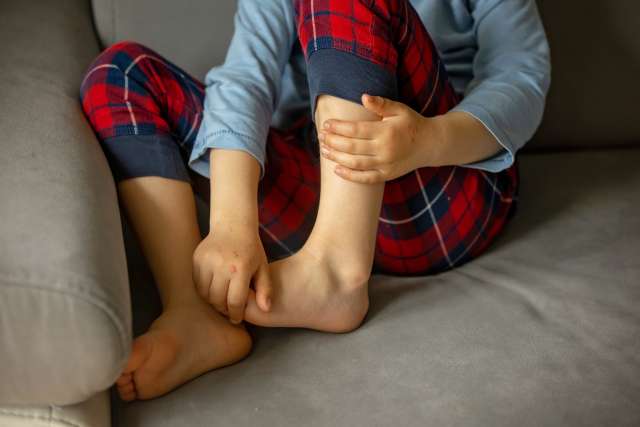Growing pains are the most common cause of musculoskeletal pain in young children. But for many parents, the condition is a bit mysterious. Your child complains of pain that comes on at night — but only sometimes. The pain doesn’t always affect the same place on the body, and the next day, your child runs and plays as if nothing happened.
The truth is, growing pains are somewhat of a mystery for health care experts, too. Despite the name, growing pains have no link to growing or growth spurts. They are simply nonspecific pain that occurs during childhood — during the time of life when most growing occurs.
Experts aren’t entirely sure what causes growing pains, and there is no consistent evidence providing answers. Common theories include:
- Muscle soreness due to physical activity
- Low vitamin D levels, which can weaken bones
- Hypermobility, which is when joints have a greater-than-normal range of motion
- Stress
Regardless of what may be behind recurrent limb pain in children, it happens. The American Academy of Pediatrics reports that one in three children may be diagnosed with growing pains.
Knowing how to recognize growing pains, what to expect and how to ease the pain can provide relief for both you and your child.
What are growing pains?
Growing pains are intermittent muscle aching or throbbing sensations common in preschool and school-age children, ages 3 to 12. The pain typically:
- Affects the lower limbs (shins, calves, thighs and behind the knees), but can occasionally happen in other locations, such as the arms, shoulders and back
- Happens in the evening or at night, often after a very active day
- Lasts from a few minutes to a few hours, with pain subsiding by the next day
- Occurs on both sides of the body
Children can experience growing pains off and on for months or even years, but they rarely happen every day. There may even be months-long stretches between episodes. The good news is that growing pains rarely interfere with a child’s ability to participate in physical activities they love.
How to relieve growing pains
Your child’s primary care physician can assess your child for growing pains. However, there are no diagnostic tests for growing pains and no medical treatment.
There are ways to minimize the pain and keep your child comfortable, including:
- Applying heat or having your child take a warm bath
- Gently massaging the painful area
- Stretching the affected muscles
- Taking over-the-counter pain medication such as ibuprofen and acetaminophen
Children with growing pains should not stop being active. There is no evidence suggesting that rest between growing pains episodes reduces the occurrence of the pain.
Signs that a child’s pain might not be growing pains
Not all leg pain in children is growing pains. Your child may be experiencing something other than growing pains if you notice:
- Constant or increasing pain that is always in the same spot and doesn’t subside
- Fever accompanying the pain
- Injury preceding the pain
- Joint stiffness in the morning
- Limping or difficulty bearing weight
- Redness or swelling around the pain
It’s never a good idea to assume that limb pain in a child is growing pains. Your child’s pediatrician has the best understanding of your child’s overall health and lifestyle. They can evaluate your child’s symptoms and will recommend further action if needed.



